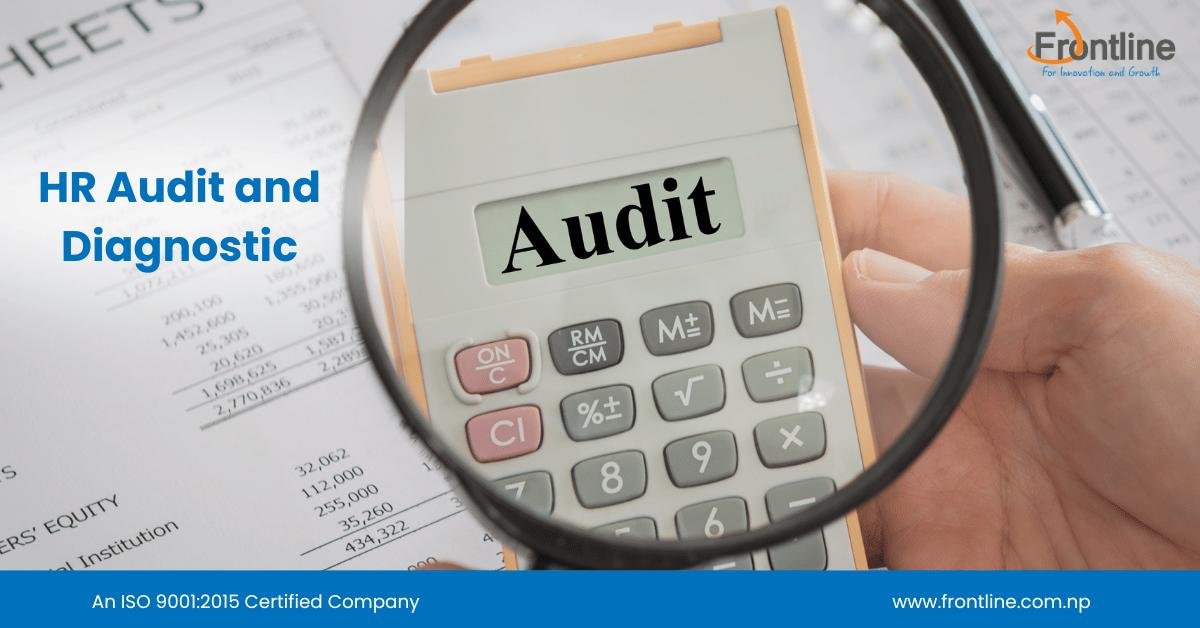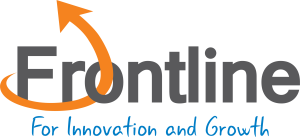HR Audit and Diagnostics
HR Audit and Diagnostics
Comprehensive HR Audit and Diagnostics Service in Nepal

Frontline Consult HR Audit and Diagnostics service refers to a systematic and comprehensive (holistic) review of the organization’s HR policies, Practices, and processes. It involves evaluating the effectiveness and efficiency of the HR Department to ensure it aligns with the organization’s goal, complies with legal regulations, and labor policies, and supports the well-being and productivity of its employees. This process is instrumental in identifying areas of improvement, streamlining operations, and enhancing overall organizational performance.
Importance of HR Audit
The importance of HR Audit and Diagnostics can be:
- To be confident in Government Laws and HR Compliances
- To retain performing employees
- Cost Saving
- Strategic Alignment
- To get rid of unnecessary fines and penalty
- Finding Gaps between Labour Laws and Internal Bylaws
- Statutory – HR Audit
According to the Labor Act 2017, section 56, all organizations are required to conduct a Labor Audit by the end of the Nepali Month of Poush (Mid-January) every year. The Labor Audit comprises certain criteria regarding the contract of employees, working hours, compensation and benefits of the employees, holidays and leaves, and such other criteria that show the status of employee welfare and HR policies of the organization.
This is an easy and guided questionnaire. A mid-level HR manager can do this audit if s/he is well equipped with Labor Act 2074 knowledge As per the Labor Act 2074 and required by the Ministry of Labor, Employment, and Social Security, every Nepalese organization needs to submit the Labour Audit report on an annual basis. It is a compliance Audit to identify whether the HR process is in line with the Law or now. Following are the major contents to be covered in HR Audit as per Labour Act 2074.
- Number, type, and other details of the labor workforce.
- According to section 11, have the employees been provided with a contract and offer letter? If not specify the reason.
- Are the employees above the age of minority? If not what sort of work do the minor employees perform?
- According to section 28 do the employees work eight hours a day and forty-eight hours a week? And if they work for more than these hours. Does the company provide overtime?
- Is the firm registered in the social security fund?
- If money is deposited in the Social Security fund, state the amount.
- Does the company have any provision for a bonus? If yes how is the bonus distributed?
- Does the company have a labor union? If yes have the elections for the trade union been held or not?
- And other questions related to the safety of the work environment and employee welfare.
- At the end of the form, the recommendations and suggestions felt by the company to be improved can also be mentioned.
- HR Policies and Practices AUDIT
Human Resources (HR) is a critical function within any organization, responsible for managing its most valuable asset: its workforce. The process of conducting an HR audit and diagnostics service typically involves the following steps:
Frontline HR Audit and Diagnostics Process
The process of conducting an HR audit and diagnostics service typically involves the following steps:
- Planning: Define the scope and objectives of the audit, including the specific areas to be assessed. Determine the audit team and establish a timeline.
- Data Collection:
Gather data related to HR policies, procedures, employee records, and relevant documentation. This includes job descriptions, employment contracts, performance evaluations, and HR manuals. - Assessment:
Evaluate HR processes and practices in areas such as recruitment, onboarding, performance management, compensation and benefits, compliance with labor laws, diversity and inclusion initiatives, and employee relations. - Gap Analysis:
Compare the current HR practices to best practices and industry standards. Identify gaps or areas in need of improvement. - Recommendations:
Based on the findings, provide recommendations for enhancing HR operations, addressing compliance issues, and improving employee engagement. - Implementation:
Work with HR and management teams to implement the recommended changes and improvements. - Monitoring:
Continuously monitor and measure the impact of the changes made as a result of the audit. Adjust strategies as needed to ensure ongoing improvement.
Benefits of HR Audit and Diagnostics Service
- Risk Mitigation: By identifying and addressing compliance issues, an HR audit reduces legal and regulatory risks, protecting the organization from potential lawsuits and fines.
- Efficiency and Cost Savings: Streamlined HR processes result in cost savings and increased operational efficiency, allowing HR to focus on strategic initiatives.
- Employee Satisfaction: Improved HR practices contribute to higher employee satisfaction, retention, and productivity.
- Strategic Alignment: Ensuring HR practices align with organizational goals enhances the company’s ability to achieve its strategic objectives.
- Data-Driven Decision-Making: An HR audit provides data and insights that enable data-driven decision-making, helping organizations make informed choices about HR strategies.
- Competitive Advantage: A well-managed HR department can be a source of competitive advantage, attracting and retaining top talent in the industry.
In conclusion, HR audit and diagnostics service is a vital process for organizations seeking to optimize their HR operations, mitigate risks, and create a more productive and employee-friendly work environment. By conducting regular audits and implementing improvements, organizations can maintain a competitive edge and achieve long-term success.
FOR MORE INFORMATION:
- Yogmaya Dhakal
- Director- Business CONSULTING
- +977 9801898005
- ym@frontline.com.np


